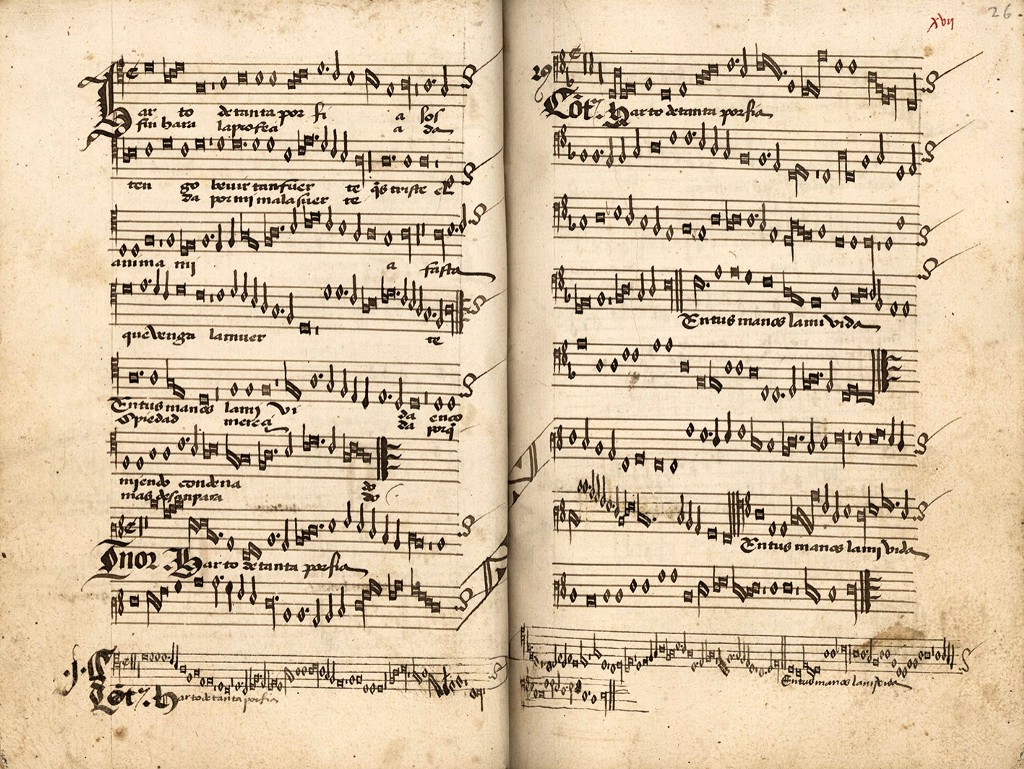
06 Jul Editing Mensural Music for Modern Performers
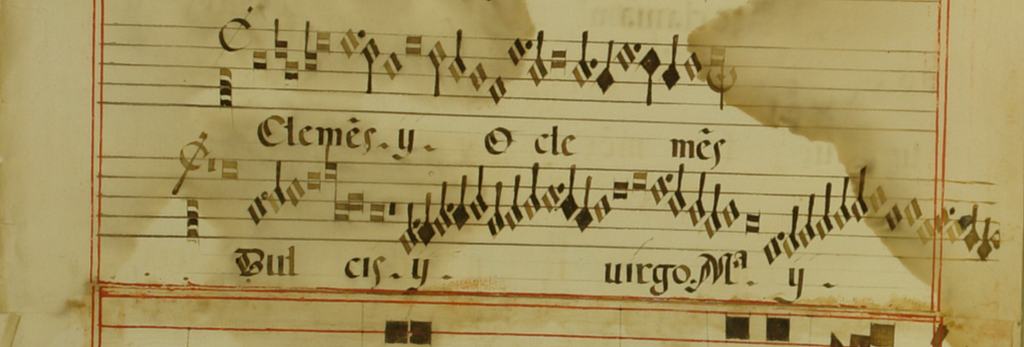
Proposal for a hybrid notational system
This paper — written by american guitarist and lutenist Michael Philip Kudirka — deals in a very constructive and creative way with the problematic of performing mensural music from fully modernised scores, proposing a system that has inspired much of Seconda Prat!ca’s editorial work. The article in pdf format including the references can be found here.
Issues Related to the Transcription of Sixteenth Century Music
Publishing music from the distant past presents a host of issues for the modern editor. The evolution of notation to fit contemporary tastes practically guarantees that music from the past will have operated under different musical assumptions, aesthetic goals, and notational principles. Provided that one’s goal is not simply to publish facsimiles of the original editions, but rather to make some kind of a bridge to today’s performers, the question arises about which elements of the notation to change and which to preserve. In the case of mensural music from the 16th century, the notation has certain characteristics that are quite different from modern notation and can be quite incomprehensible to non-specialists. In response to the peculiarities of this notation, in particular, rhythmic and metric parameters, editors such as Dr. Albert Smijers have tended to radically modernize the notation. This involves the imposition of modern time signatures and their attendant barlines, the re-notating of all rhythms with binary division (imperfectum), recommendations as to musica ficta, specific text underlay, and full-score layout. Writers such as Margaret Bent take a somewhat uncompromising view on the modernization of 16th century notation. In “Editing Early Music”, Bent points out that the ambiguities of the notation require a different set of actions in rehearsal and often generate unique conceptual paths through the piece [Bent, 1994, p. 389]. Bent also notes that there is an inherent degree of variability in this notation that is difficult for the modern editor to accept.
Bent brings to our attention the manifold deficiencies in modernizing notation, but I find that a small degree of leniency in editing 16th century music can be tolerated. I agree with her that the cognitive path a performer takes through a piece of music is at least, if not more, important than the sounding result. In order to preserve these essential parameters of the notation, I propose a hybrid notational system that leans heavily toward preservation of the original notational forms, but includes slight notational modernization in a way that does not compromise a performer’s psychophysical relationship to the music.
Bent mentions that different types of editions can be appropriate for different tasks. To divide the use of this music into roughly into three groups, one could find that largely modernized full-scores such as the New Josquin Edition are helpful for analysis and research. A fully modernized score such as the older edition of Josquin’s works by Dr. Smijers would be more appropriate for performance by amateur or semi-professional choral groups that do not specialize in early music. Facsimiles can of course be used by elite specialists in this field. The system I am presenting is intended for a fourth group: highly skilled non-specialist (“classical”) musicians.
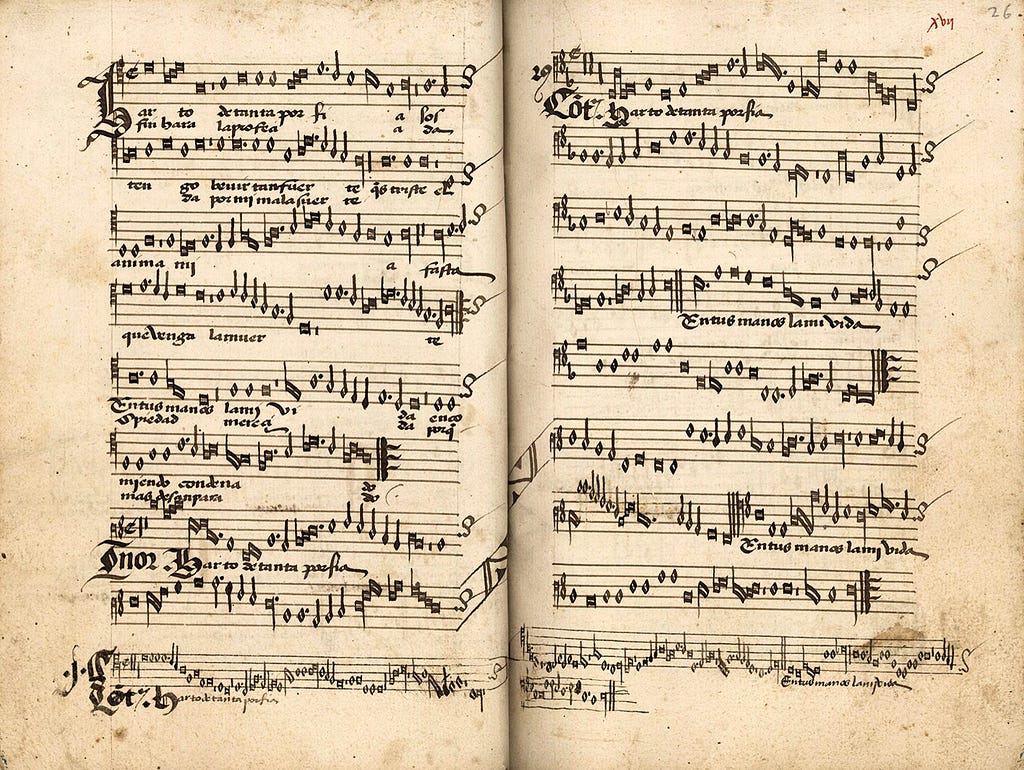
Characteristics of Sixteenth Century Notation
Music in this period used the five line staff familiar to modern musicians. The frequent use of movable “C” clefs was primarily to indicate where in the staff the two semi-tones occurred [Bent, 1994, p. 385]. In this way, pitch was not fixed to an absolute frequency, but was rather dependent on the vocal range of the singers involved. One result is that though the Dorian mode was notationally fixed on “D”, that actual sounding frequency of that tonic pitch could be selected based on the needs of a given performance. This flexibility of pitch combined with the plethora of clefs used implies that performers read intervals “relatively” from one to the next rather than with an instant recognition of absolute placement to pitch as is common today. Interestingly, Jazz players often describe this process of reading in terms of steps within a given scale rather than jumping between isolated, named pitches.
In addition to this somewhat context-dependent way of reading clefs and the flexibility of “frequency selection” [Bent, 1994, p. 386], the practice of musica ficta brings another element of variability to pitch. Musica ficta refers to the raising or lowering of a pitch by a semi-tone to provide leading tones at cadences, avoid leaps of a tri-tone, and to avoid a “vertically” sounding tritone with another voice. Again, Bent shows us how our modern conception of notation is uncomfortable with such ambiguities. In a sense, we apply our sense that a notated “F” means exactly “F-natural”. In the 16th century, however, that symbol simply meant “some kind of F”. Whether it sounded high or low was up to the performer. This introduces a principle of rehearsal that is not uncommon to string players: first one practices their part and makes intonational adjustments based on the linear quality of their part. Then, in rehearsal, different types of adjustments have to be made in order to tune to the ensemble [Bent, 1994, 389]. There are elements of individual choice that are inherent to the 16th century notational system, though most modern performers seem more comfortable with suggestions from an editor placed above the staff.
Perhaps the most arcane parameter of 16th century notation is the use of mensuration symbols. This elaborate system of symbols eventually gave rise to the modern time signature in the 18th century [Berger, 1993, p. 5]. In the 16th century, however, the rules governing mensurations were ambiguous and deserving of huge numbers of treatises by theoreticians and performers alike [Bank, 1972]. There were two primary functions of a mensuration symbol. The first was to define the approximate tempo of a part, based on which rhythmic value was ascribed to the tactus. The second was to describe which rhythmic values consisted of three subdivisions (perfectum), and which consisted of two subdivisions (imperfectum). Both the modern rhythmic system and the mensural system are “based on the idea of a chain of decreasing note-values” [Berger, 1993, p. 1]. However, the modern system consisting of imperfectum division from top to bottom is in fact, just one possibility among the vast number of permutations inherent in the mensural system. In fact, the mensural system gravitated toward greater use of imperfectum at all levels of the rhythmic hierarchy so that by 1609, the composer and theorist Adriano Banchieri could write of just two surviving mensural symbols (the C and slashed C corresponding to “common time” and “cut-time”) [Bank, 1972, p. 253]. Mensuration symbols in the 16th century were also frequently mixed among the different parts in a polyphonic work. It was not uncommon to have a tenor part in an entirely different, though fractionally related, tempo with a different set of perfectum/imperfectum divisions. The superimposition of different mensurations also followed a general trajectory from complexity to greater simplicity through the 16th century [Bank, 1972].
One related parameter is the lack of barlines and ties. Scores were “near-absent” at this time according to Bent and the rhythmic independence between parts allowed for an elegant graphical realization free from the vertical requirements of the full-score. While notation without barlines or ties tends not to generate as much discussion as mensuration symbols or musica ficta, it should not be underestimated as an essential component of a performer’s relationship to this music.
Rhythmic notation has already been discussed in relation to mensuration symbols, however, there are two aspects to the interpretation of rhythm that haven’t yet been mentioned. The first is that in regard to perfectum divisions of note values, there are a series of context dependent rules that can cause the same graphical symbol to last for different durations. This aspect of the rhythmic system lingered on from the Middle Ages and became less frequently used as the 16th century progressed. The second aspect of context-dependent rhythm is the ligature. This collection of symbols, also connected to Medieval practice, had their own set of rules for deriving the intended rhythm, which was in turn affected by the mensuration and immediate rhythmic context.
The final parameter of 16th century mensural notation I will outline is that of text underlay. Bent describes this as the most flexible of all the variables in this notation. She says that the “physical alignment of note and syllable is so often blatantly casual” [Bent, 1994, p. 385] that modern editors tend to make huge personal contributions to the realization of a piece by defining specific underlay in the modern fashion. In 16th century practice, performers were required to handle the text in a personal way, deciding if, where, and when to repeat a given piece of text.
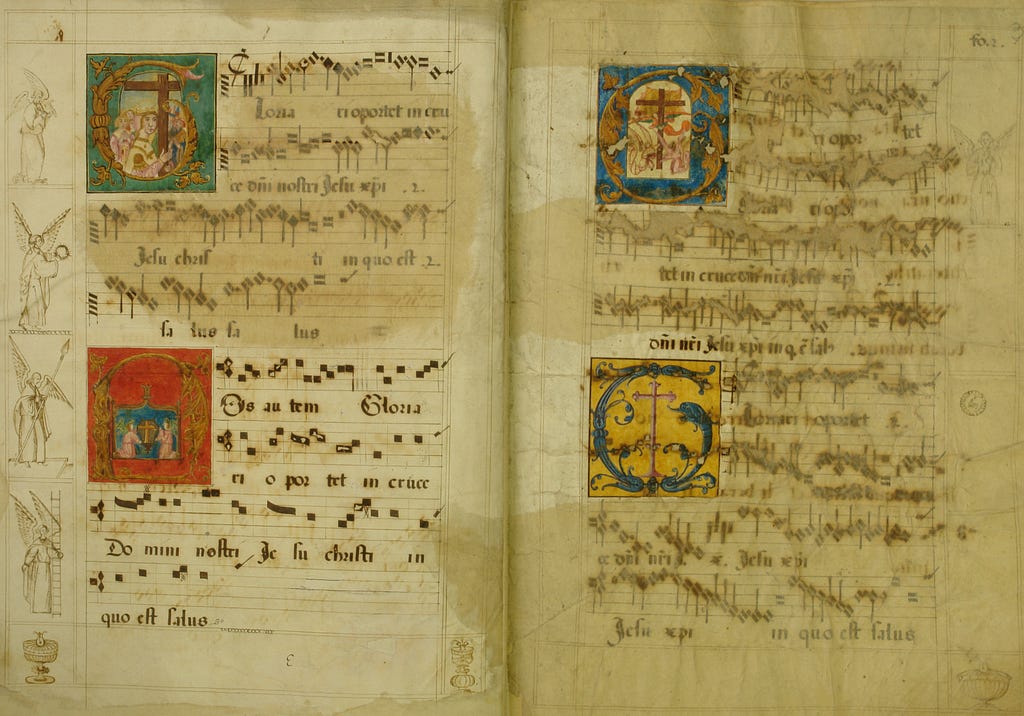
The Problem With Modern Notation
There are two fundamental problems with the wholesale transcription of 16th century music into modern notation: defining notational ambiguity, and disregarding the relationship between graphic layout and the psycho-physical nature of performance. The first of these, the disambiguation of open variables, is perhaps the easier case to make for conservation of the original notation. The past several centuries have witnessed a general tendency toward greater specificity of musical notation. From the very general directions of Medieval neumes to works of total serialism in the mid-twentieth century, there has been an increasing amount of control exerted from the composer on to the performer. This has reached the point in contemporary music where it is not at all uncommon to have a dynamic, fingering, accent, bowing, and string number surrounding every note of a piece. This, combined with the nested poly-rhythms of the complexist composers, leads to a seemingly complete control of every aspect of execution, while the role of performer becomes that of hyper-efficient information processor. It shouldn’t be surprising that counter-movements by composers such as John Cage, Jürg Frey, and Michael Pisaro seek to put a large amount of the control back in the hands of performers. These composers work with open parameters, instruction pieces, and process pieces — three ideas which find remarkably similar parallels in 16th century music. For editors of early music not familiar with these new trends in Experimental Music, ideas of notational specificity enter into their editions almost reflexively. Unfortunately, in an effort to present a score based on the most current scholarship about performance practice, editors may unconsciously be short-circuiting the most essential quality of the notation: the flexibility and autonomy of performers. Perhaps the ‘authenticity’ we should be seeking is in the process of realizing the notational ambiguities as performers, rather than defining a single specific “sound-map” from the position of editor [Bent, 1994, p. 390]. Again, Bent points out that even if the realization ends up being the same, the cognitive path of discovering when to use musica ficta is a very different path than simply reading suggested accidentals from an editor.
The second issue with modernized notation is not concerned with fundamentally changing the piece by defining open parameters, but rather with the more subtle process of substituting modernized graphical symbols for the original ones. This concerns musical material which is clearly defined and where there is no possible sonic alteration imposed by the editor. These adjustments occur in the imposition of barlines and ties, the use of oval note-heads, the augmentation or diminution of rhythmic values to conform to a more modern notion of ordinary tactus, the realization of puzzle or mensuration canons, and full-score layout. Each of these adaptations has a direct effect on the psycho-physical nature of performance, though some are more significant than others. The lack of barlines is perhaps the most significant in that one’s sense of time becomes entirely contingent on the rhythmical web created by the whole group of singers. This is a markedly different sensation than the familiar reliance on downbeats. When contra-metric patterns are split into tied notes over the barline, the unique rhythmical structure is distorted and unnaturally oriented to an artificial downbeat. This is an even greater problem when canons occur at different parts of the “measure” [Meyer, 1967]. Without barlines, rhythmic values are kept whole and the implication of contra-metric patterns can flow in and out of the given mensuration with a high degree of flexibility.
Clearly, editors of 16th music are well-intentioned, for it is difficult to see, much less uproot, the assumptions of one’s own culture. The “work-concept” inherited from the 19th century is still, unfortunately, clearly evidenced in the “General Introduction” to the New Josquin Edition (NJE): “The edition attempts to offer a version of each composition as close to the composer’s conception as it is possible to get using the surviving evidence” [Elders, 2003, IX]. This culture of defining open parameters according to something that we think was “the composer’s conception” caused countless editors to realize figured bass parts in Baroque repertoire. Only relatively recently has it become clear to a large number of performers that a rough improvisation comes closer to the intention of the composer than a perfectly executed editor’s realization. It seems likely that editors who realized figured bass thought that they would help make the pieces less intimidating, or more accessible to non-specialist performers. It also seems possible that similar concerns could have been at play in the addition of dynamics, performance instructions, and modern bowing to earlier editions of Bach’s music. In a strange sort of paradox however, it seems that performers become truly passionate about a body of work when editors allow the processes inherent in the music to work in their own way. This is not to say that Bach has to always be played from a facsimile, and in fact, neither does 16th century music, but editors need to become sensitive to what the effect of any notational change is in the mind of the performer. In this spirit, I propose a new system for editing 16th century works.
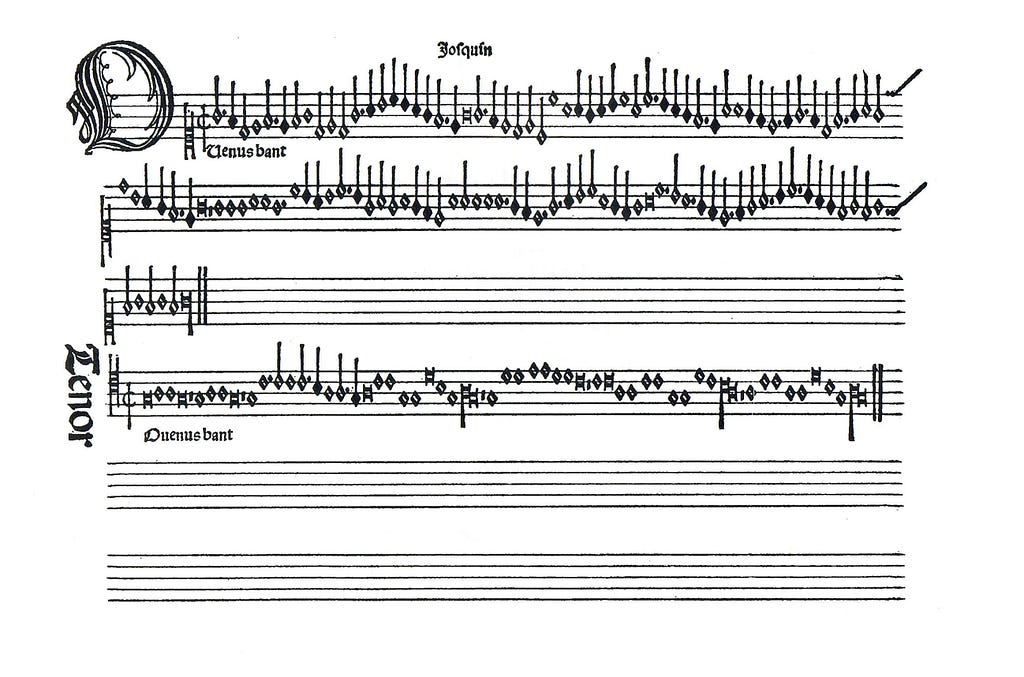
Proposal for a Hybrid System
The majority of the 16th century notational system can be retained. The particular benefits of most of these elements have already been discussed, so I will list them as follows:
- parts only (no score)
- no barlines or ties
- retain the prevailing rhythmic values (no augmentation or diminution)
- original tempo ratios between parts
- original clefs
- original accidentals (no musica ficta)
- original text-underlay
- petrucci font (diamond note-heads)
The only detail that wasn’t discussed earlier is that of the diamond note-head. Out of all the parameters discussed, the shape of the note-head seems to have the least bearing on psycho-physical aspects of performance. However, considering how simple the adjustment from oval note-heads is for a performer, I felt that the aesthetic quality of the original shapes warranted retention.
There are five aspects of the notation that need to be modernized:
- removal of perfectum division of rhythm
- re-notation of ligatures into brackets
- specification of tempo relationships between sections
- specification of tempo relationships between parts
- addition of prose instructions for multiple parts derived from a single line
First, the most perplexing aspect of this music is the use of the perfectum division of rhythm as indicated by the various mensuration symbols. The symbols can be retained for reference purposes, but a performance instruction must be made at the beginning of each work stating that all rhythmic divisions have been regulated to duple division through the rhythmic hierarchy. Notes that were, in the original, meant to be sustained for three subdivisions should have a dot placed after them.
Secondly, ligatures present an unnecessary impediment to the performance of these works by nonspecialists. Common practice now is to re-notate these symbols using the standard rhythmic symbols and placing a bracket over them to show that in the original they functioned as a unit. The bracket elegantly joins the respective notes together while allowing the performer to bypass the arduous task of memorizing the collection of ligature shapes and their attendant rules.
Thirdly, consecutive sections are frequently separated by a double-bar and have different mensural symbols denoting the relationship to the tactus. The effect of this is some type of tempo change which is always based on a strict mathematical ratio to the previous tempo [Bank, 1972, p. 259]. This is a technique used frequently in contemporary music, and is usually referred to by the term “metric modulation”. Musicologists disagree as to which was the preferred note of equivalence when moving from perfectum to imperfectum. Berger insists that the rhythmic value of equivalence is the breve which is divided in three, then, in effect, two in the space of that three. Bank cites Tinctorius frequently to support his idea of minim equivalence, in effect, making the breve in the second section faster. While there is still considerable disagreement as to how these tempo/tactus changes are to be interpreted [Berger, 1993, p. 9], any given editor can make their suggestion by writing the two rhythmic values of equivalence above the barline that separates the sections. This is a familiar technique to any performer of 20th century music and can solve the confusion of tempo relationships quite directly.
The fourth adaptation is similar to the previous one, except that it concerns the tempo relationship between parts. Again, this is always in a strict mathematical ratio, but can yield entirely different sorts of rhythmic values between simultaneously sounding parts. A similar system as that between sections can be used based on rhythmic equivalence. Over each part, one may simply list the names of all the parts with their various temporally equivalent rhythmic values separated by equal signs. Once a common tactus is found, there should be no difficulty in executing the different tempi simultaneously.
The final addition is really just an expansion of text-based instruction already found in the original score. Canons were frequently notated either on the same part, or on almost identical copies with some type of instruction for deriving different voices. Sometimes the instruction was a puzzle, in which case it’s fair to give a modern performer the specific instructions for realizing it, or sometimes it’s clearly stated, and need only be translated out of Latin to suit today’s performers. The point however, is that the actual realization does not need to be completely written out since these are invariably based on tempo relationships of simple mathematical ratios [Bank, 1972, p. 259].
Agnus II of the ‘Missa L’homme armé Super Voces Musicales’ (Josquin)
What follows are three different versions of the Agnus II from Josquin’s Missa L’homme armé Super Voces Musicales. The first is a facsimile of the original 1502 print made by Petrucci. The second is the edition made by Dr. A. Smijers in 1957. The third is a new version made according to the principles I’ve outlined here.
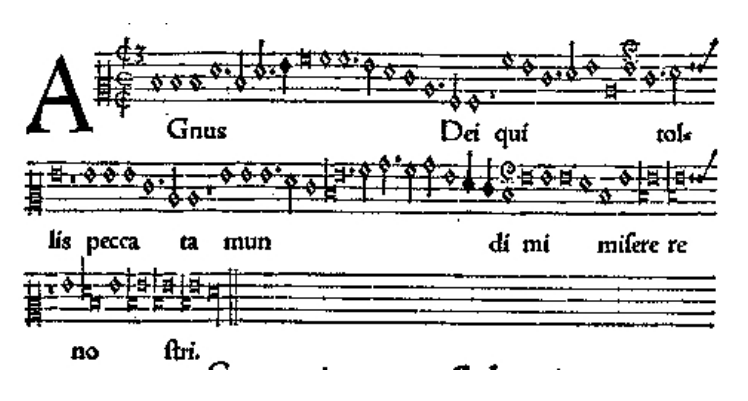
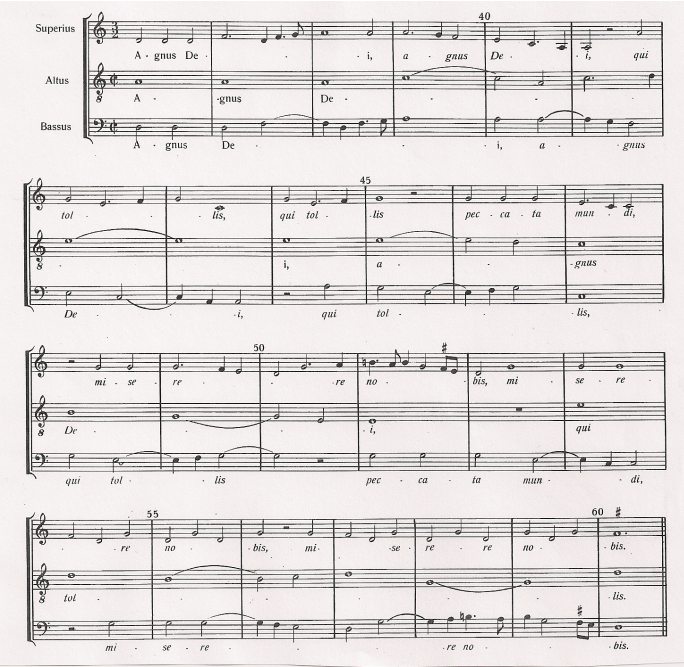
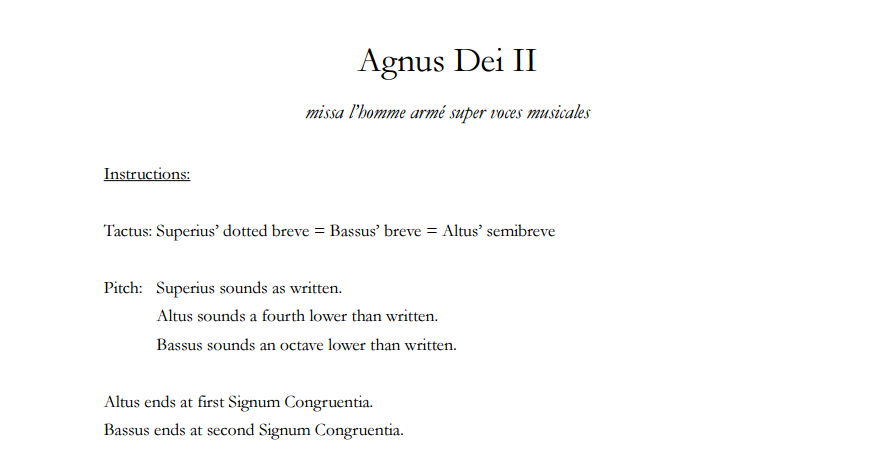
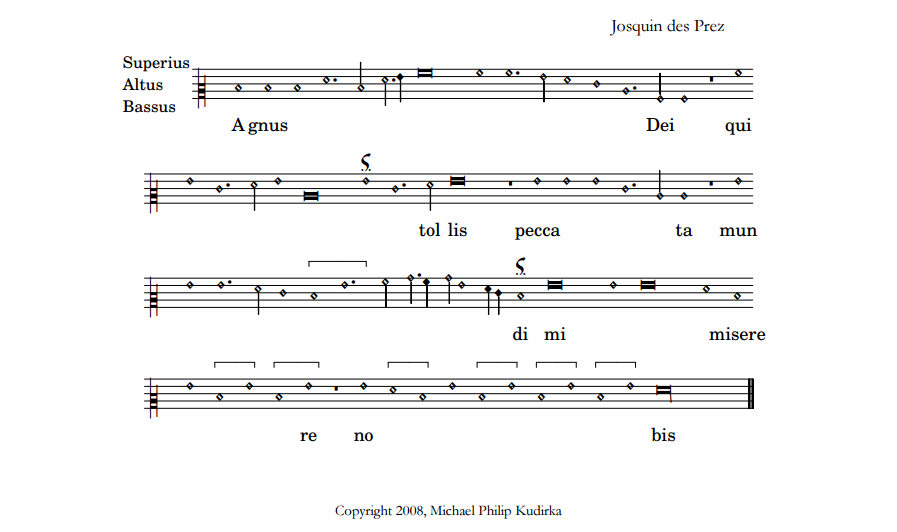
Conclusion
In conclusion I would like to reiterate Margaret Bent’s point that no one type of edition can serve everyone in the best possible way. She reminds us that editors must ask the question, “For whom do we edit?” [Bent, 1994, p. 390]. Perhaps an amateur choral group would really only be able to perform the piece from the 1957 Smijers edition. Perhaps a music scholar attempting to analyze a piece would be incapable of doing so without a conscientiously edited full-score such as the New Josquin Edition. A performer who spends all of his or her time reading from facsimiles of 16th music may find the mensuration symbols and ligatures to eventually become second nature. I feel that for highly trained non-specialist performers, however, none of these editing methods is effective. Perhaps with this new system for editing this music for performance, 16th century repertoire can finally take a place in “classical” concert programs next to Scarlatti, Beethoven, Brahms, and Shostakovich.
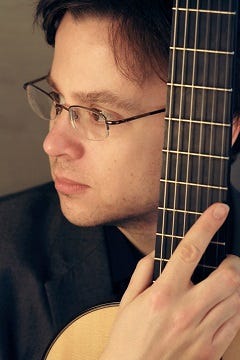
Michael Kudirka enjoys a diverse career as a solo recitalist, chamber musician, lutenist, and basso continuo player on both modern and period instruments. His simultaneous interest in collaborations with living composers and artful improvisation in 16th, 17th, and 18th century music provide him with a fresh perspective on the multi-faceted traditions of the classical guitar. Dr. Kudirka has served on the faculties of the University of Southern California, the Interlochen Arts Academy, and the UNC School of the Arts.

No Comments